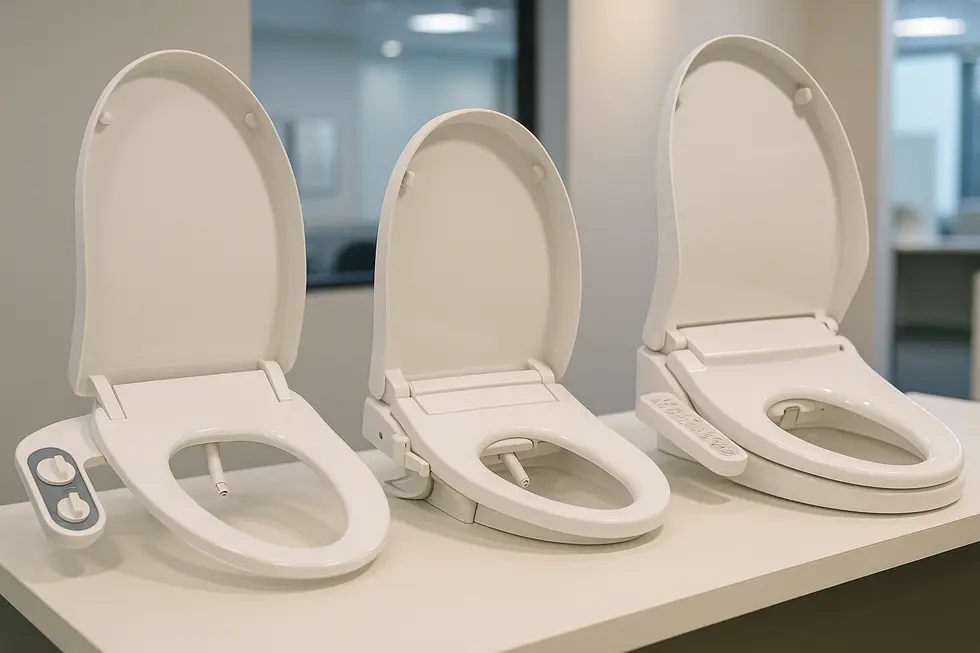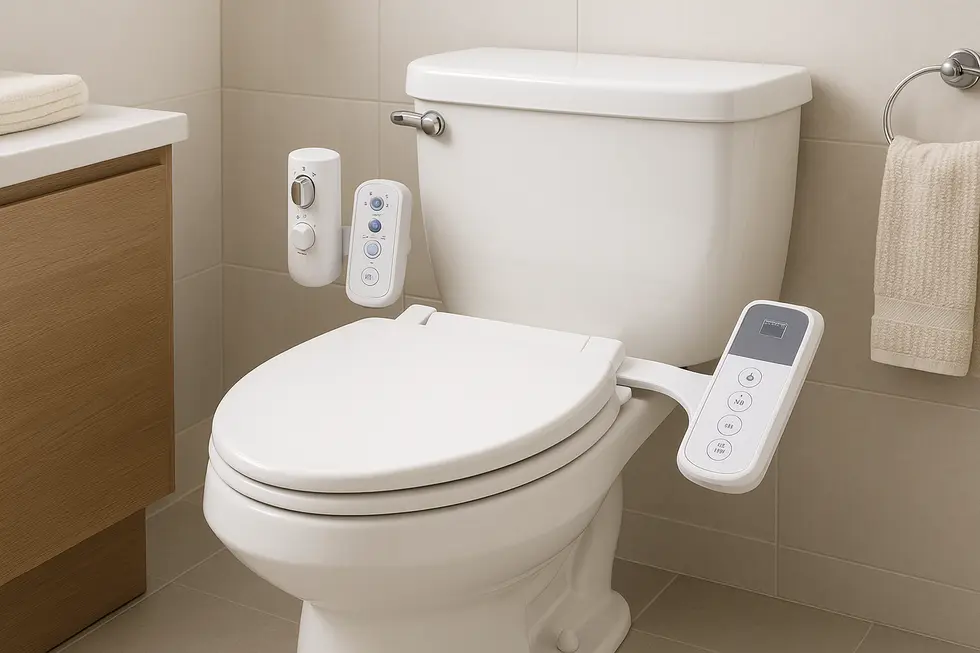Bidet Attachment
Understanding the Cost of Bidet Attachments: A Smart Family Investment
Choosing a bidet attachment is a thoughtful way to enhance your family’s hygiene and comfort. With a vast array of options available, understanding the factors affecting the cost of bidet attachment can guide an informed decision. This comprehensive exploration begins with evaluating the technological aspects influencing the cost of bidet attachment, followed by an examination of market pricing dynamics. Finally, an analysis of consumer value and purchasing considerations will equip your family with the tools needed to choose the perfect bidet attachment at a reasonable cost.
From Simple Spray to Smart Hygiene: How Technology Shapes the Price of a Bidet Attachment

Enthusiasts often imagine the jump in price between a basic sprayer and an app-controlled seat is mere branding. In reality, every extra dollar is rooted in technology. The moment electronics enter the frame, circuit boards, temperature regulators, and safety chips replace the humble T-valve. Smart sensors that recognise user position must be calibrated to millimetre accuracy; their microcontrollers add both material cost and specialised labour during assembly. If the attachment also “learns” user preferences through AI algorithms, software development hours and post-launch updates are quietly folded into the retail tag.
Comfort features carry similar hidden premiums. Continuous warm-water washes sound simple, yet they require instant heaters able to raise temperature within seconds without scalding risk. These heaters draw significant wattage, so engineers integrate energy-saving standby modes and insulated reservoirs. Paradoxically, the parts that save electricity over years often cost more up front. The same logic applies to water-saving aerators and dual-nozzle designs: micro-valves and flow restrictors demand tighter manufacturing tolerances, lengthening production lines and quality checks.
Material science adds another layer. High-grade stainless, antimicrobial polymers, and ceramic glazes resist limescale and bacteria, but they come from smaller supply chains with stricter testing. When consumers ask why a sleek chrome wand costs twice a plastic one, the answer lies in corrosion labs, not marketing departments.
Behind every new feature stands an R&D budget. Brands compete to create gentler pulses for sensitive skin or safer night-lights for children. Prototypes fail, tooling is revised, certifications are paid for. Each step protects the end user, yet inflates the bill of materials.
Finally, adoption itself influences cost. Manufacturers balancing mass appeal and innovation often release mid-tier models that cherry-pick a few premium elements. Shoppers comparing prices can explore these compromises in guides to the best bidet attachment options, seeing how added tech pushes costs past the entry level.
Understanding these intertwined factors explains why two attachments that look alike at first glance can differ by hundreds of dollars, and why future breakthroughs—voice control, health analytics, even grey-water recycling—will undoubtedly reset the pricing conversation again. (External source: Smart Bidet Toilet Seats Market Analysis)
From Bare-Bones Sprayers to Smart Seats: How Price Bands and Economics Shape Bidet Attachment Costs

Consumers often assume that all bidet attachments perform the same task and should therefore cost roughly the same. Yet a quick scan of store shelves shows a price ladder that begins around the cost of a family dinner and climbs toward the outlay for a new appliance. Understanding why those rungs exist starts with recognising three broad tiers.
At the entry level, purely mechanical attachments—no wires, no heaters—sell for roughly $30–$70. Their components are little more than valves, tubing, and a single nozzle, which keeps manufacturing simple and margins thin. Brands compete here on volume, so price is driven primarily by economies of scale and inexpensive plastics. This tier is where many first-time buyers land, often after reading guides to basic bidet toilet attachments.
Step up to the $70–$150 bracket and the bill of materials changes. Dual or retractable nozzles demand stronger springs and corrosion-resistant metals. Manual temperature mixers add brass fittings, while sleeker designs require higher-tolerance molding. The extra hardware raises production costs, but so does customer service; users expect clearer instructions and longer warranties when they pay triple digits. Retailers, meanwhile, gain flexibility to offer seasonal discounts without eroding profit.
Finally, electronic seats that double as attachments start around $150 and can exceed $600. Here the economics pivot to technology investment: water heaters, seat elements, air pumps, and printed circuit boards all require R&D, safety certification, and ongoing software support. Because these models target comfort seekers rather than bargain hunters, brands price less aggressively and lean on reputation to justify mark-ups. Interestingly, global demand for such ‘smart’ hygiene tech is expanding at an estimated 12% CAGR through 2030, a rate substantial enough to encourage continuous feature escalation even as it slowly nudges the average cost of bidet attachment upward.
Currency fluctuations, shipping fees, and regional regulations layer additional cost variables, but the overarching equation remains: the more convenience, durability, and automation packed into a bidet attachment, the higher the production risk and, consequently, the sticker price. Understanding the cost of bidet attachment in relation to these factors helps shoppers map their must-have features to these tiers and quickly locate the sweet spot between fiscal sense and daily comfort.
Balancing Budget, Benefit, and Future Savings: Judging the True Cost of a Bidet Attachment
The shelf price of a bidet attachment is only the opening act; the real measure of value combines hygiene, comfort, sustainability, and long-term economy. A basic mechanical model may cost little more than a family dinner out, yet delivers a pressurized water rinse that leaves users noticeably cleaner than paper alone. That superior clean can translate into greater confidence, less irritation, and fewer wipes after each visit—quiet dividends that never appear on the receipt.
From a household finance viewpoint, paper reduction is the sleeper advantage. Analysts estimate the average home flushes through hundreds of rolls per year. Even a modest attachment can trim that demand by half or more, paying for itself within months and carving a lasting dent in grocery bills. Add the environmental upside—fewer trees felled, less packaging, lower transport emissions—and a one-time purchase evolves into a daily act of sustainability.
Costs rise as features accumulate, yet each upgrade has a calculable return. Warm-water capability relieves sensitive skin and promotes consistent use in cold climates; an air dryer removes residual moisture and may eliminate paper completely. Night-lights, deodorizing filters, or self-cleaning nozzles boost convenience and hygiene, important for households with children, seniors, or mobility challenges. The question becomes: which comforts improve quality of life enough to justify the premium?
Installation influences total spend more than many shoppers expect. Most attachments fit beneath the existing seat and connect to the supply valve in under 20 minutes. Choosing a model engineered for DIY mounting avoids plumber fees; selecting one that matches the bowl shape prevents costly adapters. Before purchasing, measure the bolt spread and check clearance at the rear rim so the control arm doesn’t collide with walls or cabinets.
Finally, price is best weighed against credible guidance. Comparative reviews, such as the in-depth bidet attachment buying guide, break down performance per dollar and can spotlight mid-priced units that outperform expectations. Aligning those insights with personal priorities—be it skin health, eco-impact, or luxury—turns a simple accessory into a smart investment.
For broader market context showing how rising hygiene awareness drives innovation (and gradual price drops), see the latest growth forecast at Business Research Insights: https://www.businessresearchinsights.com/market-reports/bidets-market-111726
Final thoughts
Bidet attachments represent a significant investment in family hygiene and comfort. By understanding the technological factors, analyzing market trends, and considering personal needs and budget, families can make informed decisions. These insights not only empower the buyer but also ensure that the chosen product delivers optimal value and satisfaction.
Experience a new standard of clean with PEGABidet—designed for comfort, safety, and independence. Join thousands who trust us to make personal care simple and dignified. Contact us contact@pegabidet.com
About us
PEGABidet is a brand owned by L.A NEXTGEN LLC, based in California. We design intuitive, hygienic, and accessible bathroom solutions that prioritize safety, dignity, and independence. Our mission is to make personal care effortless and empowering for people at every stage of life.

